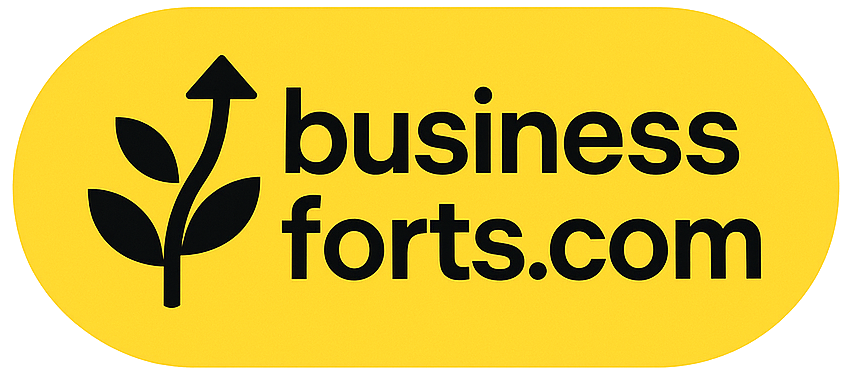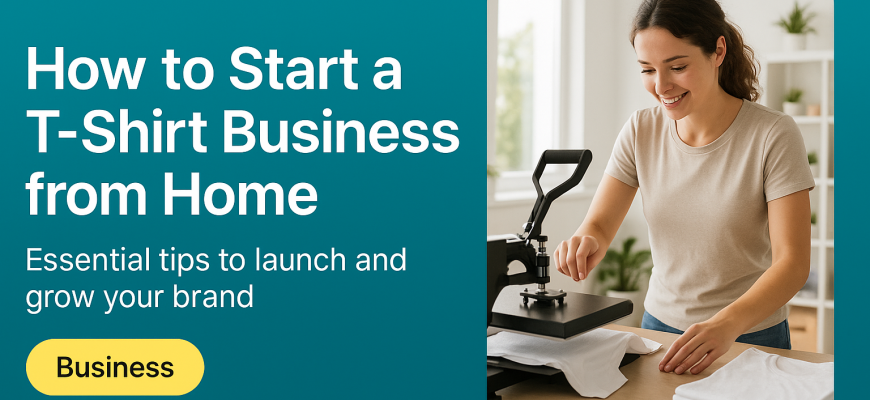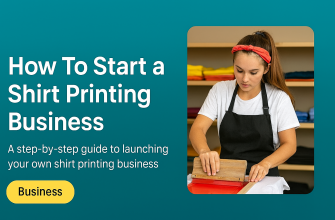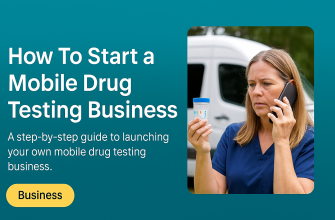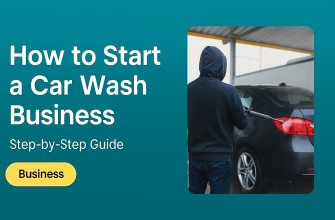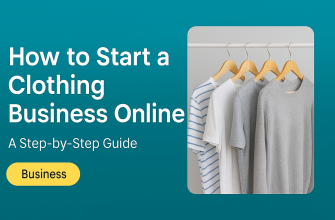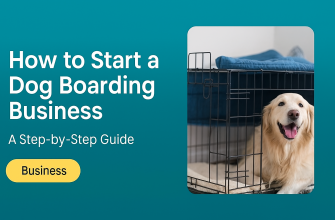I’m Alex Rivers, a business coach for women, and I’m so excited you’re here — ready to turn your t-shirt dreams into reality. Whether you’re a busy mama balancing kiddos and a new idea, or a passionate woman craving a creative side hustle, launching a t-shirt business from home can be the perfect venture. In this guide, I’ll walk you through everything – from sparking that first idea and finding your niche, to designing shirts, setting up an online store with print-on-demand, marketing your brand, and staying consistent on the journey. It’s part inspirational pep talk, part practical roadmap. We’ll focus on using print-on-demand platforms as a smart, low-cost way to launch your business (meaning you won’t need to buy tons of inventory upfront). Let’s do this step by step!
Step 1: Spark Your Idea and Inspiration
Every great business starts with a spark of an idea. So, what do you want your t-shirt brand to be about? This is the fun brainstorming stage where you let your creativity flow. Start by thinking about what inspires you or what message you’d love to share on a t-shirt. Ask yourself:
-
“Who do I imagine wearing my shirts?” – Maybe it’s fellow moms, college students, yoga lovers, gamers, nurses, or any group you relate to.
-
“What vibe or message do I want to spread?” – Perhaps you’re drawn to witty humor, empowering feminist quotes, faith-based positivity, cute animal graphics, or motivational slogans.
Jot down all ideas that excite you. At this stage, nothing is too silly or ambitious – it’s a creative free-for-all. You might envision an entire line of funny mom life shirts, or see yourself designing artsy nature graphics. Don’t worry about how to do it yet; just capture those ideas. Often, the best t-shirt brands start from personal passions or communities the founder cares about. For example, if you love fitness, you might dream up catchy workout tees; if you’re a proud dog mom, maybe you imagine adorable dog-themed designs. The goal here is to find an idea that lights you up – something you’ll be excited to work on and that will resonate with like-minded customers.
Tip: Explore what’s already out there for inspiration (but no copying!). Browse popular t-shirt shops on Etsy or Amazon, scroll Instagram or Pinterest for trending t-shirt designs, and note what grabs your attention. Is there a funny saying or beautiful design style that gives you an “aha!” moment? Inspiration can come from anywhere – a phrase you say often, a social cause you support, or a hobby you adore. Keep a notebook or digital doc of these idea sparks.
At the end of this idea-generation phase, you should have a clearer vision of the kind of shirts you want to create. For example, you might decide “I want to make shirts that celebrate the chaos and humor of motherhood,” or “I want to create geek-chic t-shirts for women in tech.” Great! Hold onto that thought, because next we’ll refine it further by defining your niche.
Step 2: Choose Your Niche and Audience
Now that you have a general idea, it’s time to narrow down your niche. In the t-shirt world, trying to appeal to “everyone” usually means you’ll get lost in the crowd. Successful t-shirt businesses often have a clear niche or theme that helps them stand out. A niche is essentially a focused segment of the market – a specific group of people with shared interests or characteristics that your designs will appeal to.
Think about who exactly your ideal customer is. Instead of saying “my shirts are for everyone,” try to be specific: maybe it’s “t-shirts for cat-loving moms,” or “quirky graphic tees for teen girls who love science fiction,” or “yoga-inspired spiritual shirts for women.” The more you can define your audience, the easier it will be to create designs and marketing that truly connect with them.
Choosing a niche helps you in a few big ways:
-
You stand out in a crowded market: There are millions of t-shirts out there. By targeting a defined group, you’re offering something not everyone offers – whether it’s a unique theme or a specific message. As one print-on-demand expert notes, a specific niche (like chinchilla lovers or pickleball enthusiasts) helps you target a defined audience and differentiate your brand.
-
Design becomes easier: If you know who you’re designing for, you can tailor your style and content. For example, if your niche is “women who love hiking,” you might use nature graphics and outdoorsy slogans. If it’s “empowered female entrepreneurs,” you might use motivational quotes and a sleek, modern design style. A clear niche acts as a creative guide.
-
Marketing is more effective: You’ll know where to find your audience and what kind of language or communities they engage in. It’s easier to market to a specific group (say, members of a Facebook group for cat moms) than to the whole world.
If you’re unsure how to pick a niche, start with what you know or care about. Often, we as women entrepreneurs find great niches within our own interests or identities. Are you a teacher? A nurse? A proud gamer girl? Look at communities you’re part of – there might be a t-shirt niche waiting there. Also, consider gaps in the market: is there a theme you love that you don’t see represented in shirts often? That could be your opportunity.
Once you’ve chosen a niche, maybe even create a simple buyer persona – a short description of your ideal customer (e.g., “Meet Samantha: she’s a 35-year-old mom of two who loves yoga and has a playful sense of humor, and she’d wear my funny mom yoga shirts on her relaxing days.”). This persona will help guide your decisions moving forward.
Remember, narrowing your niche doesn’t limit you – it actually gives you a stronger starting point. You can always expand later. But starting niche will help you get traction faster with an audience that feels, “Hey, these shirts were made just for me!”
Step 3: Design Your T-Shirts (Tools & Tips)
Time for the fun part – designing your t-shirts! Don’t worry, you do not need to be a professional artist to create great t-shirt designs. Thanks to modern technology, there are plenty of beginner-friendly design tools and resources that make it easy to bring your ideas to life. Let’s break down how to create your initial designs:
- Start with a Few Solid Design Ideas: Revisit your niche and brainstorm 3-5 specific designs you want to make. For example, if your niche is “cat-loving moms,” your design ideas could be a cute illustration of a cat with the words “Cat Mom Life,” a funny slogan like “Coffee, Cats, Chaos, Repeat,” or a minimalist graphic of a mom and cat. It’s good to have a small collection of designs to start, rather than just one, so customers have a few options to fall in love with. Keep your designs aligned with your niche’s theme and vibe.
- Use DIY Design Tools: You’ll be happy to hear that many design software tools are free or inexpensive and super user-friendly. A favorite is Canva, which is fantastic for beginners – it has drag-and-drop functionality, pre-made t-shirt templates, thousands of fonts, and graphics you can use. You can literally create a professional-looking design in Canva without any design background. Other great free tools include Photopea (a browser-based editor that works like Photoshop) and GIMP (a free software similar to Photoshop). Even basic programs like PowerPoint or Google Slides can work for simple text-based designs in a pinch. Many print-on-demand services also have built-in design generators where you can add text and stock images directly onto a shirt template.
- Incorporate Text and Graphics: T-shirt designs generally come in two flavors: text-based or graphic-based (or a combo of both). If you’re not confident in drawing, focus on text designs with stylish typography. A catchy phrase in a cool font can be an awesome t-shirt. Sites like Creative Market or Creative Fabrica sell beautiful font packages (and sometimes you can find free font sites too – just ensure the license allows commercial use). For graphics, you don’t have to draw from scratch – there are free resources like Unsplash or Pixabay for photos, and OpenClipArt or Freepik for vectors. Just double-check licenses for commercial use. Canva itself has a huge library of icons and illustrations you can use for free or cheap. Mix and match elements: maybe your shirt has a small icon (like a heart or a cat silhouette) plus a phrase around it. Simplicity often sells – a clean, easy-to-read design that pops on a shirt.
- Consider Hiring Help (if needed): If you have an idea but just can’t execute it the way you want, it’s absolutely okay to seek help. Websites like Fiverr or Upwork have freelance designers who can create a custom t-shirt graphic for you at various price points. You can often get a simple design done relatively affordably. Another idea: collaborate with a friend or family member who has art skills – maybe you have a cousin who’s great at drawing, and you cut a deal to split profits or pay a small fee for a design. As a fun twist, if you’re a mom, even your kids’ doodles could become a cute t-shirt design (childlike artwork on shirts can be charming and unique!).
- Create Mockups: Once you have some designs created, it’s helpful to visualize them on actual t-shirts. A mockup is a realistic product image showing your design on a shirt. You can use free mockup generators (Print-on-demand platforms like Printful or Printify have them, and Canva has some as well) to superimpose your design on a t-shirt image. This lets you see how the design will look when worn – for instance, how it fits on the chest area, how it looks on different colored shirts, etc. Mockups will also be useful for listing your products online so customers can see the product. When reviewing your mockups, consider things like: Does the design need to be larger or smaller? Would it look better on a black shirt or a white shirt? Make tweaks as needed.
- Don’t Strive for Perfection (Yet): Here’s a secret: you don’t need the “perfect” design to start selling. Some of the best-selling t-shirts are extremely simple, like a basic text phrase that just really resonates with people. So don’t get stuck trying to make the perfect design. Get a few good designs ready and move forward. You can always improve or add more designs later as you learn what your customers like. Remember, every expert designer was once a beginner. If you’re new to design, you will improve with practice – but you can still start selling now. Many successful t-shirt entrepreneurs began with zero graphic design experience; they learned as they went. As one mompreneur put it, “the sheer determination to be successful is much more important than formal knowledge”. You got this!
By the end of this step, you should have a small collection of designed t-shirt graphics, ready to show the world. Give yourself a high-five – you’ve moved from idea to actual designs, which is a huge leap! Now, let’s get those designs in front of people by setting up your store.
Step 4: Set Up Your Online Store
With your designs in hand, it’s time to decide where and how you will sell your t-shirts online. Setting up your “storefront” might sound technical, but don’t worry – nowadays it’s quite accessible, even if you’re not a tech wizard. You have a couple of main routes here, each with its pros and cons. The most common options for a t-shirt business are either selling on an online marketplace or building your own online store. Let’s explore both:
- Option 1: Online Marketplaces (Etsy, Amazon, etc.) – If you’re a beginner, using a marketplace can be a quick and easy way to start. Platforms like Etsy or Amazon Merch (Amazon’s print-on-demand program) let you list your products on their site where millions of customers are already shopping. The benefits? It’s user-friendly, you get an existing audience (people go to Etsy or Amazon and might discover your shirts just by browsing/searching), and you don’t have to build a website from scratch. Etsy, for example, is very popular for custom and handmade products and many women entrepreneurs love it for its simplicity. It does have small fees – like around $0.20 to list an item and a percentage of each sale – but the upfront cost is minimal. Amazon Merch on Demand has no upfront cost and handles printing/shipping for you (it’s a POD service itself), but you have to apply and be approved to sell, and they have stricter design guidelines. Marketplaces handle the technical side (payment processing, etc.) which is great if you’re not super techy. The downside is you have less control over branding and customer experience (your shop is one of many on a big platform), and there’s competition side-by-side with you. But as a starting point, marketplaces are fantastic.
- Option 2: Your Own Online Store (Shopify, Wix, etc.) – The other route is to create your own website/store for your brand. This might sound daunting, but platforms like Shopify make it very straightforward to build an online store without needing to code. Shopify is a popular choice with a lot of t-shirt entrepreneurs – you sign up for an account, pick a template, and you can have a professional-looking website in a short time (they even have free trials so you can play around before committing). Shopify also has easy integrations with print-on-demand apps (more on that soon), so orders can flow automatically. Other site builders include Wix, Squarespace, or using WooCommerce on WordPress. Running your own site gives you full control: you can customize the look and feel, build your brand identity strongly, collect email addresses for marketing, etc. It’s your own corner of the internet. The cons? It might take a little more time to set up initially, and there are some costs – for example, Shopify’s basic plan is around $29/month once your free trial ends, and you might pay for a domain name (like yourbrand.com). Also, unlike a marketplace, if you have your own site you’ll be responsible for driving traffic (people won’t find it unless you promote it), so it requires more marketing effort. Many entrepreneurs start on a marketplace to get their feet wet, and later also open their own site once they validate their idea – or you can do both in parallel.
- What About Social Media Shops? – A newer option is selling directly through social media. For instance, you can set up an Instagram Shop or Facebook Shop where people can buy your products straight from your social posts. This usually ties into having an e-commerce platform (e.g. you might still need a Shopify or Etsy that connects to your Instagram). But even without the official “shop” feature, some people start by posting their designs on Instagram or Facebook and simply taking orders via DM or a payment link. This can work if you already have a following or if you want to start super informally. It’s a manual approach but it’s free and lets you validate that people want to buy.
- Local/In-Person (Optional): Since we’re focusing on online and at-home, you might not do this, but I’ll mention it: some start selling in person at local events, fairs, or through friends. If you ever go that route, you’d produce some inventory (or samples) upfront and set up a booth or so. It can be great for community building. But since we’re using print-on-demand to launch, you don’t need to worry about this at start – just keep it as a future possibility (like doing a local holiday market once you have your brand running).
Once you choose your selling channel, you’ll need to set up your shop profile and list your t-shirt products. This includes tasks like:
-
Creating your shop account (sign up on Etsy or set up your Shopify site with a name, etc.). Follow the platform’s prompts; they’re usually step-by-step.
-
Uploading your t-shirt designs as products: You’ll take those design files, and via either the marketplace interface or your own site’s product uploader (often through the POD app), put each design on a shirt product. Choose the shirt colors, sizes, etc. You’ll also need to write product titles and descriptions. Make them engaging and clear. For example, instead of a generic title like “Funny T-Shirt”, say something like “Chaos Coordinator Mom Life T-Shirt – Funny Mom Tee”. In the description, speak to your ideal customer as if you’re chatting with her: highlight the shirt’s message or design (“This cute tee celebrates the coffee-fueled chaos of motherhood with a fun slogan…”), mention the material if you know it (“printed on a soft, comfy cotton tee”), and any care or fit info. Use keywords your customer might search for (like “mom life shirt”, “gift for new mom”). On marketplaces, use tags effectively (Etsy lets you add tags like “mom shirt” “funny mom gift”).
-
Setting prices: Do a bit of research on what similar t-shirts sell for. Typically, print-on-demand t-shirts might sell retail around $20-$30 each, depending on quality and design complexity. Ensure you set a price that covers the base cost (what the POD company charges you) and leaves you a profit. (For example, if the POD charges $12 to print and ship the shirt, you might price it at $25, which after fees might give you around $10 profit per shirt. We’ll talk budget in a second too.) Don’t undervalue your work, but as a newcomer you can price competitively to attract early customers, then adjust as needed.
-
Linking your print-on-demand service: If you’re using a platform like Shopify or Etsy, you’ll usually connect a POD app or integration at this stage (for instance, installing the Printful or Printify app and syncing it with your shop). This integration is what makes the magic happen – when someone orders a shirt, the order is automatically sent to the POD provider to print and ship. We’ll cover choosing a POD partner in the next section, but just know that setup is part of creating your store. Most POD services have tutorials to connect to Etsy/Shopify easily.
Before you announce your store to the world, it’s a good idea to test everything. If possible, do a test order (even if it’s you buying your own shirt at cost) to make sure the process works – the order goes through, the POD service receives it, etc. Also double-check your listings for typos or mistakes. This is an exciting stage – seeing your online store or listings live with your products is such a confidence boost!
Step 5: Choose a Print-On-Demand Partner
Since we’re focusing on print-on-demand (POD) as the way to launch your t-shirt business, let’s talk about how to choose the right POD service. Print-on-demand companies are essentially the behind-the-scenes fulfillment partners who will make and ship your t-shirts for you, so you don’t have to hold inventory at home. This is what keeps your startup costs low and manageable. With POD, you only pay for the product and printing after you’ve made a sale (the cost comes out of the sale price), which means no big upfront investment and no stacks of t-shirt boxes in your living room – hooray!
Here’s how it works in practice: you connect your online store to a POD service, you create product listings (say, a black t-shirt with your “Cat Mom Life” design). When a customer buys that shirt from your store, the order details are automatically sent to the POD company. They print the design on a blank shirt in their warehouse, pack it up nicely, and ship it directly to your customer under your brand label. You don’t have to touch a thing! The customer pays you when ordering; you pay the POD provider their fee for fulfilling the order, and the difference is your profit. It’s pretty magical and allows you to focus on design and marketing while they handle the heavy lifting of production and shipping.
Popular POD Platforms: Some of the well-known print-on-demand services include Printful, Printify, Teelaunch, Gelato, Redbubble, Teespring, and others. Each has its own catalog of products, base prices, and features. For a t-shirt business, Printful and Printify are extremely popular, so let’s mention those:
-
Printful: Offers high quality prints and a wide product range (shirts, hoodies, mugs, etc. if you expand). It integrates smoothly with Shopify, Etsy, Wix, etc. Printful has no monthly fee; you just pay per product fulfilled. Their base t-shirt costs might be a bit higher than some competitors, but they are known for reliable quality and shipping. They also have a mockup generator and even an in-browser Design Maker tool.
-
Printify: Works similarly; one cool thing is Printify partners with multiple print providers, so you often can choose which provider (based on location, price, or reviews) will fulfill each product. They boast one of the largest selections of products. Printify’s base prices on shirts can be a tad lower (and they have a premium plan that, for a monthly fee, gives you discounted product prices – but you don’t need that when starting, you can use the free plan). Printify integrates with Shopify, Etsy, etc. too. They also have a design tool and even some free graphics you can use.
-
Others: Redbubble and Teespring are actually more like marketplaces themselves – you upload designs to those platforms and they handle everything (you don’t even need a separate store; customers find your designs on their marketplace site). The upside is super simplicity (and no need to do marketing tech setup), but the downside is you have less control over branding and typically lower profit margins. Gelato is another POD service that’s expanding, with global printing (good for international orders). It’s worth browsing a few to compare.
How to choose? Consider the following factors:
-
Product cost and quality: Check how much each charges for a basic t-shirt print, and if they offer the shirt brands you like (commonly used quality blank t-shirts are Bella+Canvas 3001, Gildan Softstyle, etc. – many PODs carry these). Also look for reviews about print quality and shipping speed.
-
Integration with your selling platform: Make sure the POD service easily connects to wherever you decided to sell (most big ones connect to Shopify and Etsy seamlessly).
-
Shipping and fulfillment locations: If your customers are in the U.S., most POD providers can handle that. If you expect international customers, see if the POD has print facilities in other countries to ship faster locally.
-
Extra features: Some POD apps offer extras like the ability to include custom pack-ins (flyers in the package), or easy branding options (like labels, etc.), but those might not be crucial at start.
-
User interface: Since you’ll be using their app to create products and manage orders, it helps if it’s intuitive and has good support/tutorials.
The good news is signing up for POD services is usually free, so you can even create accounts on a couple of them and poke around their product catalogs and interfaces before deciding. Many entrepreneurs actually use multiple POD providers to access different products or for backup. But to start, focus on one to keep it simple.
Once you’ve picked your POD partner, link it to your store (follow their integration guide – typically it’s installing an app or clicking “connect to Etsy” and logging in). Then upload your designs to create actual t-shirt products in the POD dashboard, sync them to your store, and set your prices. The POD service will usually show you the base cost, and you choose the retail price. For example, POD says a shirt will cost $12 + $4 shipping; you might set the retail price at $24.99 with free shipping, which means when someone orders, you keep roughly $8-$9 after costs.
Keep in mind that you only pay that base cost when you get an order. If nobody orders the “Cat Mom Life” shirt yet, it costs you nothing to have it listed. This is why POD is such a fantastic model for beginners – it dramatically lowers the financial risk of starting a business. You’re not sinking money into a stack of inventory and praying it sells; you can literally test many designs and only the ones that sell will incur cost. POD lets you test and experiment with different ideas quickly. If a design isn’t selling, you can replace it with another, no harm done except a bit of time. If a design is selling, wonderful – you can invest more into promoting it or expanding that line.
Before moving on, one more tip: when you get your first couple of orders, consider ordering a sample of your own product (some POD services let you buy samples at a discount). This way you can see and feel the actual printed shirt that your customers will get. It helps you verify the print quality, shirt fabric, sizing, etc., and it’s also fun to wear your own merchandise! Plus, you can use a sample to take your own product photos if you want a personal touch in your store visuals.
Alright, at this point you’ve brainstormed ideas, defined a niche, created designs, set up an online storefront, and linked a POD provider. You are essentially open for business! Now, how do we get customers knocking on your (digital) door? That’s where marketing comes in.
Step 6: Marketing Basics for Your T-Shirt Business
“Build it and they will come” usually doesn’t apply in the crowded online world – we have to give people a little nudge (or loud invitation) to discover our fabulous t-shirts. Marketing might sound intimidating, but think of it simply as sharing your passion and product with the people who’d love it. Since you’ve identified a niche, you know who your ideal audience is – now you need to reach them and get them excited about your brand. Let’s go over some marketing basics to get your t-shirt business off the ground:
- Tap into Your Personal Network (to Launch): When you’re just starting, your friends and family are your first cheerleaders. Don’t be shy to share your new biz with them! A quick soft launch approach: send a friendly message or social media post announcing, “I started a little t-shirt business!” and share the link. These people already care about you and will likely support, share, or even buy to encourage you. You might even offer a small “friends & family” discount code for the first week, which can create a nice initial buzz and also help test your online store to ensure everything works smoothly. Early feedback from people you trust can be gold.
- Leverage Social Media: Love it or hate it, social media is a powerful (and free) marketing tool for product businesses, especially visually appealing ones like t-shirts. Create accounts for your brand on platforms where your target customers hang out. For most t-shirt brands, Instagram is a top choice because it’s visual – you can post photos of your shirts, lifestyle images of people wearing them, design sneak peeks, etc. Facebook can be useful especially if you want to join relevant groups (for instance, a Facebook group for women entrepreneurs if that’s your niche, where you might occasionally share about your shirts when appropriate). TikTok is huge right now for small business marketing – short, fun videos can go viral (e.g., a behind-the-scenes of you designing a shirt, or you wearing each of your designs with some music). Pick one or two platforms to start; you don’t need to be everywhere. Post consistently, maybe a few times a week, showcasing your products and the story behind them. Remember to use hashtags related to your niche (e.g., #momlife #yogashirt #catmom, etc.) so new people can find you. Social media is about being social, so engage with your followers, respond to comments, and even comment on or follow other accounts in your niche community. Over time this builds a tribe around your brand.
- Content Ideas for Posts: You might wonder what to post besides product photos. Mix it up with content that provides value or connection: motivational quotes (if that fits your brand), relatable memes or jokes for your audience (“ugh, my coffee’s always cold because #momlife”), short videos of you packing an order or talking about what inspired a design, customer selfies (when you get sales, encourage people to tag you), and occasional direct promotions (“New design just dropped!” or “Summer sale coming up!”). Storytelling works wonders: share why you started this business, or what each design means to you. People love buying from humans, not faceless companies, so let your personality shine.
- Basic SEO for Online Listings: If you have your own website or even on Etsy, understanding a bit of SEO (search engine optimization) can help your t-shirts show up when people search. This mostly means using relevant keywords in your product titles and descriptions. Think: what would someone type into Google or Etsy if they were looking for a shirt like yours? For example, instead of calling a product “Sunshine Tee”, call it “Sunshine Mama T-Shirt – Cute Yellow Aesthetic Mom Shirt”. The keywords “mom shirt” or “mom t-shirt” might help search traffic find you. It’s not an overnight thing, but over time, good keywords can bring in steady visitors.
- Consider Promotions & Discounts: Everyone loves a good deal. As a new shop, you might run a promotion to entice first customers. This could be a launch sale (e.g., 10% off for the first week), a buy-one-get-one-half-off if you want to encourage multiple purchases, or free shipping if you can swing it. Don’t go so low that you make no profit, but strategic small discounts can nudge someone to give you a try. Etsy has built-in sale tools, and Shopify has discount code features – use them to your advantage. Also, seasonal events or holidays related to your niche can be great times to market a promotion (like a Mother’s Day special if you sell mom-themed shirts).
- Collaborate and Network: Since you’re targeting a specific niche, think about where those people gather and who influences them. For instance, if you make yoga-themed tees, maybe there’s a local yoga instructor with a following, or a yoga blogger, who might love your shirts – you could send them a free shirt and kindly ask if they’d share it if they love it (this is a form of micro-influencer marketing). Or join niche communities (Reddit, Facebook Groups, forums) – not to spam them with ads, but to genuinely participate and occasionally share your product when it’s relevant. Collaboration could also look like partnering with a complementary small business; e.g., a local boutique might carry a few of your shirts on consignment, or you team up with a friend who makes handmade jewelry to do a cross-promo.
- Customer Service as Marketing: When you do start getting customers, treat each one like gold. Excellent customer service (fast responses to questions, a thank-you note in packages if possible, handling any issues with a smile) often leads to repeat business and word-of-mouth referrals. A happy customer might tell her sister or neighbor about your awesome shirts – which is free marketing for you! Encourage satisfied customers to leave reviews (if on Etsy or your site) or to tag you in a photo. Social proof (seeing real people enjoy your product) builds trust for new buyers.
- Be Patient and Consistent: Marketing is an ongoing effort. In the beginning, you might post and feel like is anyone even seeing this? That’s normal. Keep at it. Consistency is key – showing up regularly will slowly but surely increase your visibility. Maybe set a simple marketing schedule, like “I will post on Instagram every Monday, Wednesday, Friday, and spend 20 minutes each of those days engaging with related accounts,” or “I will reach out to one potential collaborator or feature account each week.” Little by little, you’ll gain traction. We’ll talk more about consistency next, because it truly is the secret sauce in making your business grow.
The takeaway here: marketing = sharing your passion. You started this t-shirt business because you have ideas and creativity you want to share, right? Marketing is just finding the right avenues to share it with more people who would love it. And you don’t need a huge budget; plenty of scrappy, free tactics (social media, communities, word-of-mouth) can go a long way.
Step 7: Stay Consistent and Keep Growing
By now, you’ve launched your online t-shirt business – give yourself a proud pat on the back! But launching is just the beginning of your entrepreneurial journey. One of the most important factors in turning a small start-from-home venture into a sustained, possibly thriving business is consistency. That means consistently working on your business, learning, and persisting even when things are slow or challenging. Let’s talk about how to stay consistent and keep growing:
- Set a Schedule and Routine: When you’re balancing a business with other responsibilities (whether it’s a day job, kids, school, etc.), it helps to carve out regular time for your t-shirt biz. It could be an hour every evening after the kids are in bed, or a couple of mornings a week, or the weekends – whatever fits your life. Make a little weekly plan: for example, Monday you create a new design or update your shop, Tuesday you schedule social media posts, Wednesday you research new ideas or check analytics, etc. Having a routine turns your business into a habit, and consistent effort will build momentum over time. Even if you only have a small amount of time, use it consistently and wisely.
- Continuously Create and Refresh: In the print-on-demand world, one of your advantages is the ability to add new designs without much cost. So keep those creative juices flowing! Aim to regularly release new t-shirt designs or variations. Maybe you challenge yourself to add one new design per week or per month. New designs give your existing followers something fresh to get excited about and increase your chances of having a “hit” that really takes off. Also, pay attention to what’s working – if your “cat mom” shirts are selling well but “dog mom” ones not so much (or vice versa), you have real market feedback to guide you. Tweak your offerings based on what customers respond to. Over time, you’ll refine your niche and products by seeing what gets the love.
- Embrace the Learning Curve: As a new entrepreneur, you’re going to learn so much as you go – and that’s a good thing. Maybe you’ll learn that certain Instagram hashtags work better, or that people keep asking the same question (so you add that info to your product description), or you’ll discover a new printing option. Treat every stumble or slow week as a learning opportunity rather than a failure. Did an Instagram post flop? No worries, try a different style of content next time. Did you get zero sales one month? Okay, maybe it’s time to experiment with a new marketing angle or design. Business is an iterative process. Allow yourself to be a beginner and grow. Remember, every big success story started small and faced challenges on the way.
- Connect with Community: Don’t do it all alone in isolation. Connect with other small business owners or mompreneurs (online communities, forums, or local meetups). Share experiences, ask questions, celebrate each other’s wins. On tough days, having a supportive community can keep you motivated. As a business coach for women, I highly encourage finding a tribe – it can be a Facebook group of women in e-commerce, a local businesswomen meetup, or even just a couple of friends who also run Etsy shops that you chat with regularly. When you surround yourself with others who are also striving, it reminds you that you’re not alone and that success is possible (and it’s okay to vent or ask for advice too!).
- Practice Patience and Perseverance: Consistency’s best friends are patience and perseverance. You likely won’t become an overnight millionaire selling t-shirts – and that’s perfectly okay. In the first weeks, you might get just a handful of sales or only interest from your friends. That’s normal. Don’t get discouraged if you aren’t seeing huge results immediately. Building a business is like planting a seed: you water it a little every day, and the first sprouts might be tiny, but they grow bigger with time. Keep showing up. Keep learning and adapting. As one successful print-on-demand entrepreneur shared about her journey: “Keep going and never give up. One day, you’ll look back at the numbers and realize people have spent $30,000 in your shop… I still find it hard to believe sometimes.”. That kind of milestone doesn’t happen in week one, but with consistent effort, your sales and success can accumulate in amazing ways.
- Celebrate Milestones, Big or Small: Finally, make sure to celebrate your progress. First sale? Pop a little confetti (even if it was your aunt buying from you – a sale is a sale!). First stranger sale (someone you don’t know)? That’s huge – it means your marketing is reaching new people. Celebrate it. Hit 100 followers on your business Instagram? Treat yourself to a fancy coffee. Got a 5-star review? Do a happy dance. These moments of joy will fuel your motivation tank. Entrepreneurship is a journey of many steps; appreciating each step will keep you energized for the next.
Staying consistent and positive truly sets apart those who succeed from those who fizzle out. You have the passion and now the plan – the key is to keep taking action regularly. Some days you’ll be super pumped and get tons done; other days life might throw curveballs (sick kiddo, personal stuff – it’s okay to pause when needed). If you have to step back for a bit, that’s fine – just pick back up as soon as you can. Your business will be ready when you are. Remember why you started this venture – maybe to earn extra income, to express yourself creatively, to build something of your own – and let that “why” drive you on days you feel like quitting. You’ve got this.
Final Thoughts: Launching a t-shirt business from home is an exciting and empowering endeavor, especially for us women entrepreneurs who are carving out our own paths. With the print-on-demand approach, it’s never been more feasible to start small and dream big – the custom t-shirt market is booming (over $5 billion and growing ~11% yearly!), so there’s plenty of room for your unique ideas. By following these steps – from idea generation and niche selection to design, setup, marketing, and consistency – you’re building your business one step at a time.
Most importantly, approach this journey with a warm heart and determined spirit. There will be challenges, but there will also be incredible wins – like the first time you see a stranger wearing a shirt you designed, or the moment you realize your “little side hustle” paid a big bill or gave you extra freedom. As your virtual coach, I want you to know I’m cheering loudly for you every step of the way. Stay inspired, stay practical, and don’t forget to enjoy the ride.
Now, take a deep breath, believe in yourself, and go launch that t-shirt business! I can’t wait to see what you create. Here’s to your success – let’s turn those ideas into income and have fun doing it.
